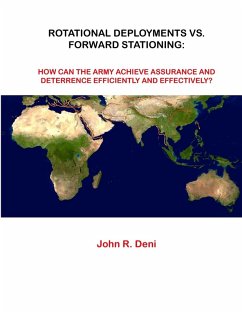For the purposes of efficiently and effectively assuring allies and deterring adversaries in Europe and on the Korean Peninsula, the Army's force posture is out of balance today, with insufficient units and Soldiers stationed overseas. Since the end of the Cold War-during which hundreds of thousands of Soldiers were stationed overseas-the pendulum has swung too far in the direction of a U.S.-stationed Army, yielding an over-reliance on rotational deployments for continuous heel-to-toe presence to achieve deterrence and assurance effectively and at reasonable, sustainable cost. The preceding assessment is the result of a 10-month study examining the costs and benefits-defined broadly-of rotational deployments versus forward stationing. Not all of the available quantitative and qualitative data point in the same direction. There are indeed a myriad of sometimes conflicting costs and benefits that must be considered in determining whether and how U.S. Army posture has become unbalanced and what to do about it.
Bitte wählen Sie Ihr Anliegen aus.
Rechnungen
Retourenschein anfordern
Bestellstatus
Storno








